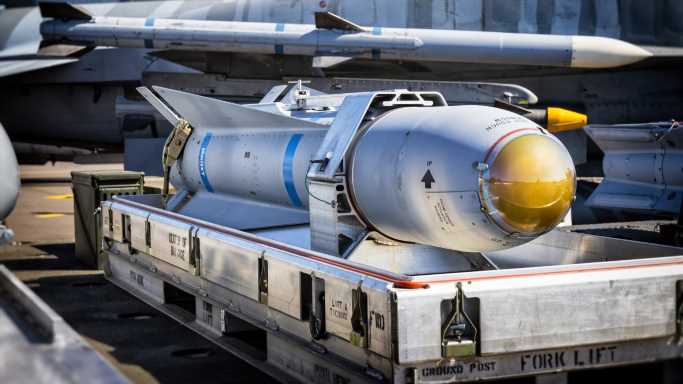
The 34 Bombs and Missiles Used by the US Military
March 19, 2023U.S. military operations today depend in large part on the use of Precision-Guided Munitions, or PGMs, which the Department of Defense defines as “[a] guided weapon intended to destroy a point target and minimize collateral damage.” These can be missiles, rockets, or guided bombs.
Precision munitions were first used in the Second World War, and they gained prominence during the Gulf War in 1991. Now equipped with GPS, laser guidance, and internal navigation systems, these weapons can place a multi-ton warhead within 10 feet of a target from hundreds of miles away.
24/7 Wall St. reviewed congressional research reports and military documents and publications to identify the bombs used by the U.S. military. These weapons include defensive missiles designed to intercept approaching threats as well as tactical missile systems and strategic nuclear weapons. Some of the systems on the list have never been deployed, while others have been routinely used for decades.
The majority of the bombs on this list were developed for use by the U.S. Navy and Air Force and account for a considerable share of the U.S. military budget. The Sidewinder missiles integrated on F-16 and F-22 fighters, for example, cost just under half a million dollars a piece — and they are considered relatively inexpensive. In fiscal 2022 alone, the DOD requested $3.5 billion for PGM programs. (These are the countries spending the most on war.)
Defense contractors, in collaboration with the military, spent years developing and testing the weapons on this list. Companies behind these munitions include many of the largest defense contractors in the world, including Boeing, Lockheed Martin, Northrop Grumman, and Raytheon.
It is important to note that while technological advances have improved the accuracy of these weapons in recent year and reduced the likelihood of collateral damage, precision bombings still often result in civilian casualties.
Click here to see the bombs and missiles used by the US military.
Sponsored: Tips for Investing
A financial advisor can help you understand the advantages and disadvantages of investment properties. Finding a qualified financial advisor doesn’t have to be hard. SmartAsset’s free tool matches you with up to three financial advisors who serve your area, and you can interview your advisor matches at no cost to decide which one is right for you. If you’re ready to find an advisor who can help you achieve your financial goals, get started now.
Investing in real estate can diversify your portfolio. But expanding your horizons may add additional costs. If you’re an investor looking to minimize expenses, consider checking out online brokerages. They often offer low investment fees, helping you maximize your profit.
Source: Read Full Article


